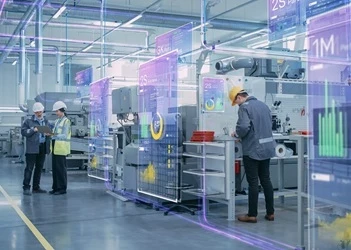Two key benefits of process discovery
Uncover how process discovery helps companies operate with hybrid work models and pinpoint automation opportunities
Add bookmark
Process discovery is a method for generating detailed process maps that help visualize and identify process variations. Applications can run in the background of an organization’s machines, capturing key stroke data and collecting information on how the business uses its various applications and how certain processes are carried out.
Here we look into some of the benefits of applying process discovery for automation and process optimization and detail how it helps organizations achieve these goals.
Process discovery helps companies operate in hybrid-working models
When businesses are operating in disparate teams in hybrid-working models, it becomes much more difficult to attain full oversight into how processes are being carried out and to identify areas where they require optimization or standardization.
Since process discovery collects data from all instances of a process being carried out, it is an invaluable tool for identifying process variations in disparate teams. Automation initiatives or process controls can be implemented to standardize these processes across an organization.
Shrikant Deo, associate director of the product management office at EdgeVerve, noted in Using process discovery to navigate the post-pandemic world report: “When we open up the data we capture, we have insights on automation, operational productivity, how a process is changing, process compliance, process transformation and visibility over what the remote workforce needs.”
Process discovery helps pinpoint automation opportunities
It can often be difficult to decipher which processes are best suited for automation and where funds and resources should be directed for the most optimal outcomes. Process discovery can often be applied to highlight golden automation opportunities and maximize the value of robotic process automation (RPA) as it offers insights into which processes will offer the greatest benefits if automated.
Since the data collected by process discovery is based on users’ key strokes, this offers the opportunity to map out business processes. It also helps companies see how they are functioning and whether there are any bottlenecks or inefficiencies that need to be addressed, highlighting the specific organizational needs that can be addressed with relevant intelligent automation (IA) technologies.
This is the method through which process discovery highlights the organizational processes that are prime for automation as it points a business toward inefficiencies that can be automated out of a process.
This makes the quality of organizational data key for the success of process discovery initiatives. In light of this, it is unsurprising that The PEX Report 2022: Global state of process excellence found that data and analytics was a top investment priority for 43 per cent of process excellence leaders surveyed in the report.
Data analytics is key for organizations to understand their processes. As mentioned above, uncovering the inefficiencies of organizational processes is the first step to process discovery and enables optimization through further initiatives, such as automation.
We have shown that process discovery is a useful tool, especially for process visibility in hybrid-work models. Here we have shown that process discovery has significant viability in identifying automation opportunities in a world where it is difficult for PEX leaders to get everyone in a room and discuss current processes.
What benefits have you experienced as a result of process discovery implementation? Let us know in the comments below.

























